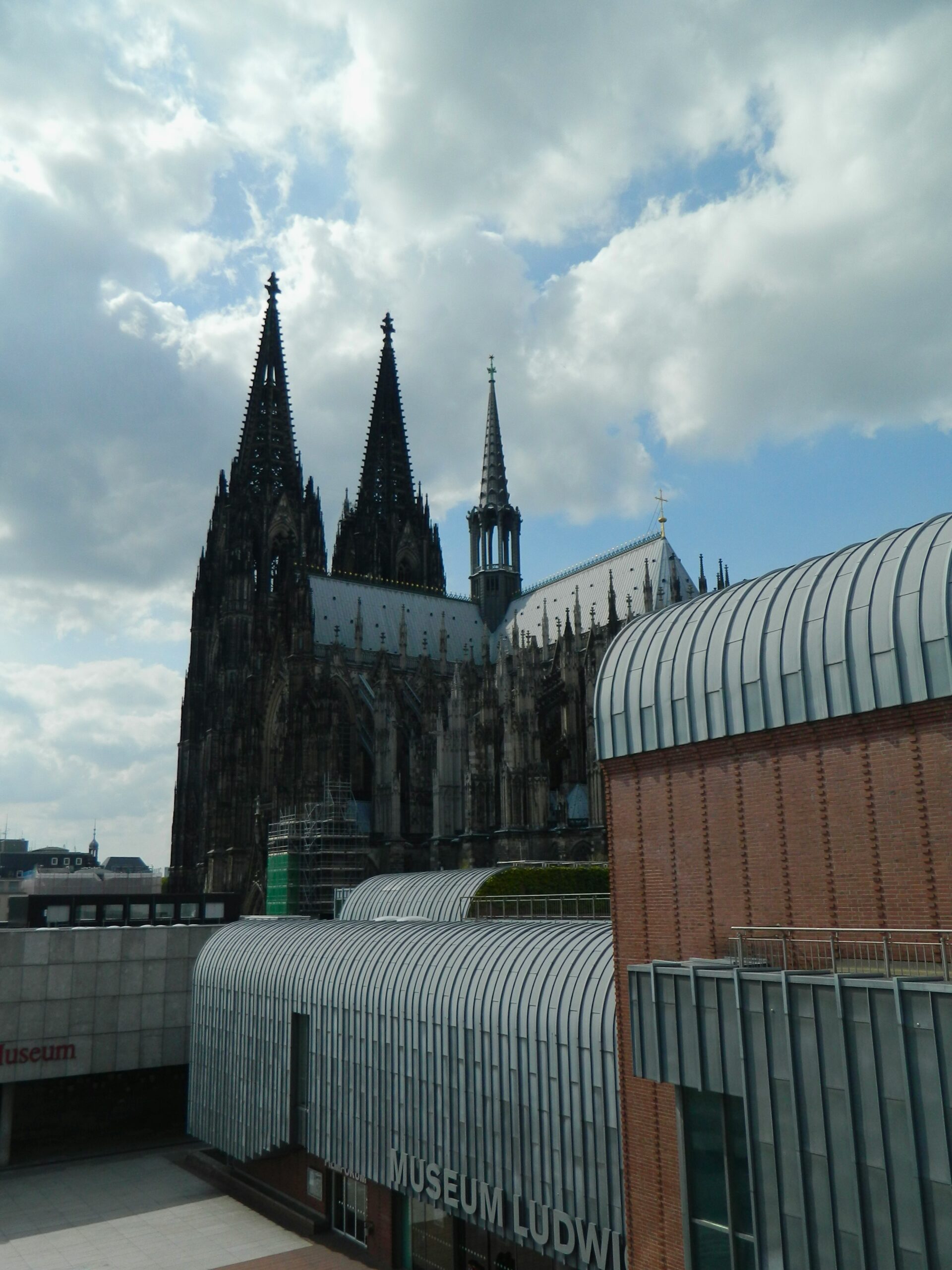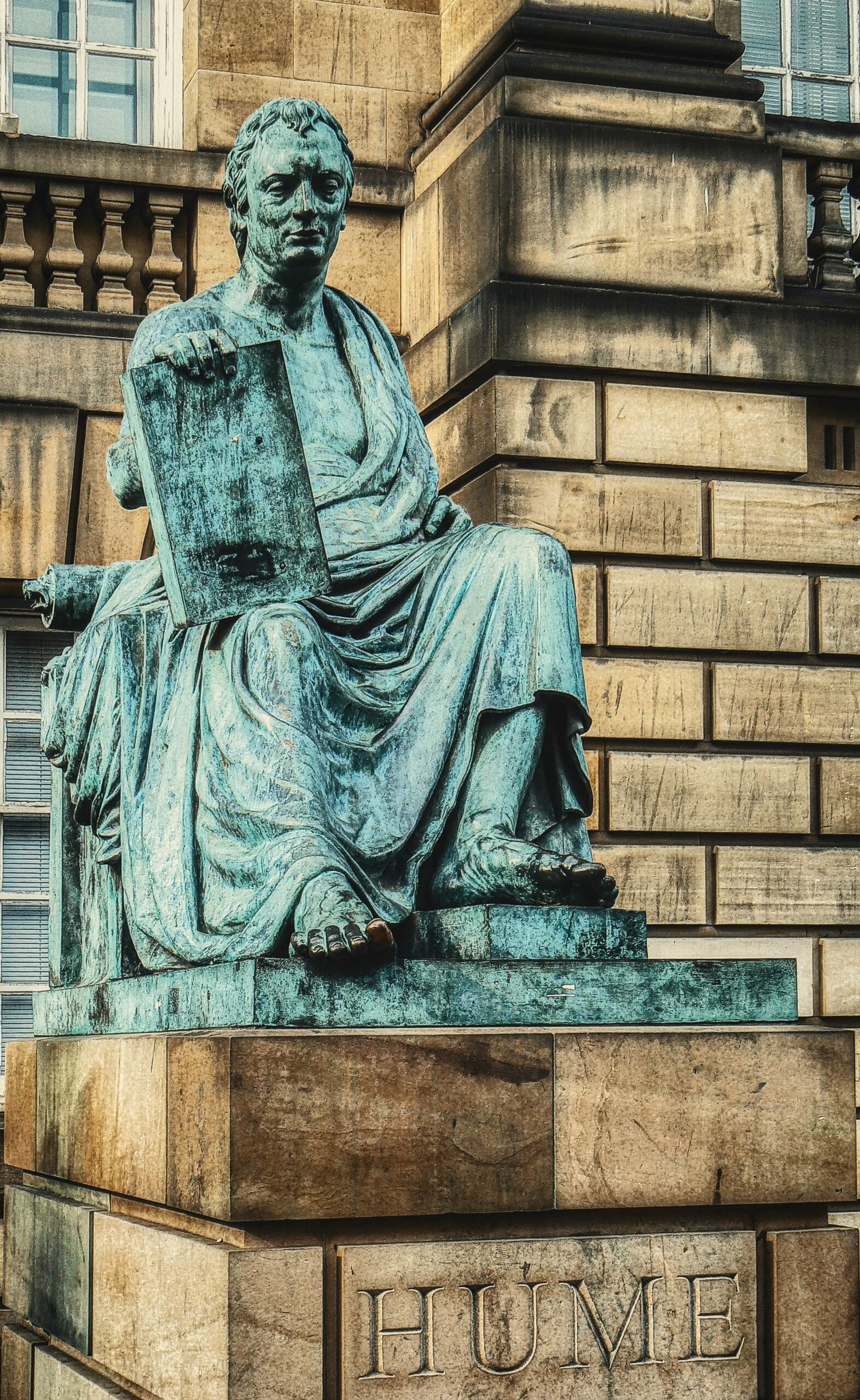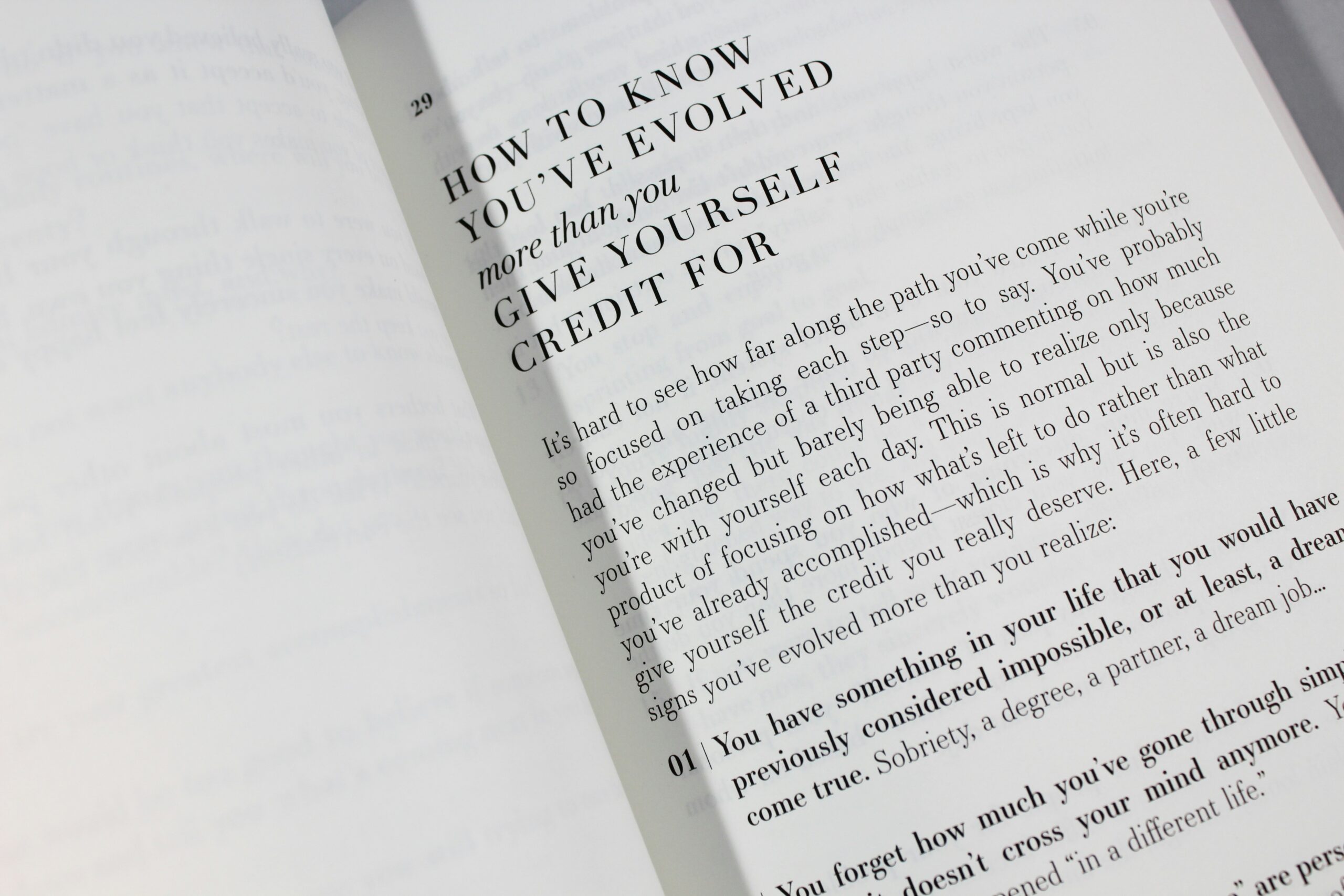Introduction to Ludwig Wittgenstein
Ludwig Wittgenstein, an eminent 20th-century philosopher, profoundly influenced a variety of philosophical domains, including the philosophy of language, logic, and mind. Born in Vienna in 1889, Wittgenstein initially pursued engineering before delving into the realm of philosophy under the mentorship of Bertrand Russell at the University of Cambridge. Two distinct philosophical eras—commonly referred to as the early and later Wittgenstein—marked his intellectual development.
Wittgenstein’s early work is epitomized by his groundbreaking book, “Tractatus Logico-Philosophicus,” published in 1921. In this seminal text, he introduced the Picture Theory of Language, positing that language functions by creating logical pictures of reality. This theory proposed that the structure of language mirrors the structure of the world, thus enabling the conveyance of meaningful propositions about the world.
After a period of withdrawal from academic philosophy, Wittgenstein returned with fresh insights, leading to his later work encapsulated in the posthumously published “Philosophical Investigations” in 1953. This period marked a significant departure from his earlier views, as he now emphasized the pragmatic aspects of language. He introduced the concept of language games, illustrating that the meaning of words is derived from their usage within specific forms of life or social contexts, rather than representing a fixed relationship between language and the world.
Wittgenstein’s contributions extend beyond his written works; his teaching and philosophical discussions left a lasting impact on his students and contemporaries, many of whom became prominent philosophers in their own right. His ideas continue to resonate within contemporary philosophical discourse, influencing fields such as cognitive science, linguistics, and social theory. By examining Wittgenstein’s life and key works, one gains a deeper understanding of his revolutionary approach to philosophy, setting the stage for a comprehensive exploration of his theories.
Picture Theory of Language
Ludwig Wittgenstein’s early work is fundamentally encapsulated in his seminal text, “Tractatus Logico-Philosophicus.” One of the core concepts presented in this book is the “Picture Theory of Language.” This theory posits that language functions as a means of projecting ‘pictures’ of reality. According to Wittgenstein, each proposition or statement in our language corresponds to a possible state of affairs in the world, akin to a picture representing a scene.
The essence of the Picture Theory is that words and sentences serve as mirrors of the world. For instance, consider the proposition “The cat is on the mat.” This statement creates a mental image or ‘picture’ of a cat situated on a mat. If this picture corresponds accurately to an actual state of affairs—i.e., there is indeed a cat on the mat—then the proposition is true. Conversely, if the cat is not on the mat, the proposition is false. As a result, the correspondence between language and reality determines truth and falsehood.
Wittgenstein’s Picture Theory is an attempt to delineate the boundaries of meaningful language. By asserting that language can only meaningfully refer to states of affairs that can be pictured, he aimed to clarify which types of propositions are philosophically significant and which are not. This framework was intended to resolve many traditional philosophical problems by demonstrating that some questions are essentially meaningless because they stem from a misunderstanding of language’s limits.
For example, metaphysical queries about the nature of existence or the essence of the universe often fall outside the scope of what can be ‘pictured’ and thus, according to Wittgenstein, cannot be meaningfully discussed using language. This radical perspective aimed to purge philosophy of nonsensical propositions and refocus it on propositions that can be clearly and logically analyzed.
In conclusion, Wittgenstein’s Picture Theory of Language is a foundational element of his early philosophy, laying the groundwork for his later ideas. By representing the relationship between language and reality through pictures, he provided a novel method for addressing and dissolving complex philosophical dilemmas.
Criticisms and Limitations of Picture Theory
Wittgenstein’s Picture Theory, outlined in his early work, the “Tractatus Logico-Philosophicus,” posits that propositions function as pictures of reality. While this theory provided a structured way to understand the relationship between language and the world, it has faced significant criticisms and limitations over time. One of the primary criticisms is that the Picture Theory overly simplifies the complexity of language, reducing its multifaceted nature to mere representations of facts. This reductionism fails to account for the nuances, ambiguities, and abstract elements that language often entails.
Another limitation is the theory’s inadequacy in dealing with abstract concepts and higher-level philosophical discussions. Critics argue that not all meaningful propositions can be reduced to pictures or simple factual statements. For instance, ethical statements, metaphysical propositions, and aesthetic judgments do not fit neatly into the framework of Picture Theory. These types of statements often express more than just factual information; they convey emotions, values, and subjective experiences that cannot be easily depicted through pictorial representation.
Wittgenstein himself recognized these shortcomings and, in his later work, “Philosophical Investigations,” moved away from Picture Theory. He introduced the concept of language games, which offers a more dynamic and flexible understanding of how language functions. Language games suggest that the meaning of words is derived from their usage within specific forms of life, rather than from their ability to picture facts. This shift highlights Wittgenstein’s acknowledgment that language is a living, evolving entity, deeply embedded in social practices and interactions.
Moreover, philosophers such as P.F. Strawson and John Searle have pointed out that Picture Theory struggles with the practical application when dealing with complex sentences and propositions. They argue that the theory does not provide a satisfactory explanation for how language can represent non-empirical truths or hypothetical scenarios. The rigidity of Picture Theory thus becomes a significant limitation when attempting to apply it to the full spectrum of human linguistic capabilities.
In light of these criticisms and limitations, Wittgenstein’s later work offers a more comprehensive approach that addresses the intricate and diverse nature of language. By moving beyond Picture Theory, Wittgenstein opened up new avenues for understanding the interplay between language, thought, and reality.
Transition to Later Philosophy
Wittgenstein’s intellectual journey from his early to later philosophy marks a significant evolution in his understanding of language and meaning. Initially, Wittgenstein’s early work, prominently illustrated in the “Tractatus Logico-Philosophicus,” was dominated by the Picture Theory of language. This theory posited that language functions as a mirror of reality, where words correspond to objects and sentences to states of affairs. The Picture Theory suggested that meaningful statements are those that can be pictorially represented in the logical space.
However, Wittgenstein’s later philosophy, elaborated in his posthumously published work “Philosophical Investigations,” reflects a fundamental shift. Over time, Wittgenstein grew increasingly critical of the limitations and assumptions inherent in the Picture Theory. He began to question the notion that language’s primary function is to depict reality. This period of reflection and criticism led Wittgenstein to develop a new, more flexible approach to language, which he termed “language games.”
The concept of language games emphasizes the multiplicity of language uses, suggesting that meaning is derived from the context and the rules governing specific linguistic activities. Rather than a static mirroring of the world, language is seen as a dynamic, social activity embedded in forms of life. Wittgenstein’s later work underscores the idea that understanding a word’s meaning requires examining its practical use within a particular form of life, rather than seeking an abstract, fixed correspondence with reality.
This transition in Wittgenstein’s thought is not merely a rejection of his earlier views but an expansion that encompasses the complexity and variability of language. His later philosophy challenges the rigid boundaries of the Picture Theory, advocating for a more nuanced and pragmatic approach to understanding how language functions in various contexts. By embracing language games, Wittgenstein opened new avenues for exploring the intricate relationship between language, thought, and reality, which continues to influence contemporary philosophical discourse.
Language Games and Theory of Use
In his later work, Ludwig Wittgenstein shifted his philosophical focus significantly, moving away from the rigid structure of the Picture Theory of language presented in his earlier work, “Tractatus Logico-Philosophicus,” to a more fluid and dynamic understanding of language. This evolution is most prominently showcased in his seminal book, “Philosophical Investigations,” where he introduces the concept of ‘Language Games’.
Wittgenstein’s idea of Language Games emphasizes that the meaning of words is not inherent but is derived from their use in specific contexts and social interactions. This theory posits that language is not a monolithic entity but a multifaceted activity intertwined with various forms of life. In other words, the significance of language is rooted in the practical activities and the social contexts in which it is employed. For Wittgenstein, understanding language necessitates examining how it operates within these diverse contexts, much like understanding a game requires knowing its rules and the environment in which it is played.
To illustrate his theory, Wittgenstein provides numerous examples of language games, which are essentially different forms of linguistic activities. These include asking questions, making requests, giving thanks, cursing, negotiating, and many more. Each of these activities represents a distinct language game with its own set of rules and purposes. For instance, the act of asking a question involves a specific structure and expectation of a response, while cursing might serve to express strong emotions or social disapproval. The meaning of the words used in these instances is contingent upon the particular game being played.
By highlighting these varied examples, Wittgenstein demonstrates that language is a social practice deeply embedded in human life. The concept of Language Games underscores the flexibility and contextuality of linguistic meaning, challenging the notion that words have fixed, context-independent meanings. This perspective has had profound implications for various fields, including linguistics, cognitive science, and anthropology, influencing how we understand communication and the role of language in shaping human experience.
Implications of Language Games
Ludwig Wittgenstein’s theory of language games carries profound implications for our understanding of meaning and communication. Central to this theory is the idea that the meaning of words and phrases is rooted in their use within specific forms of life. This perspective suggests that language is not a rigid, abstract system but a dynamic, context-dependent activity. Consequently, the meaning of a word is not inherent but is derived from its practical application within various language games.
One significant impact of language games is the shift in how we perceive the role of language in human life. Language is seen as a tool that people use to perform a range of activities, from simple requests to complex expressions of thought and emotion. This view challenges the traditional notion that language primarily serves to represent reality. Instead, language is understood as a multifaceted phenomenon that is interwoven with human practices and social interactions.
Furthermore, Wittgenstein’s theory complicates traditional views of semantics and syntax. In the framework of language games, the meaning of a word is not fixed by its syntactic position or by a set of semantic rules but by the rules and context of the particular game in which it is employed. This undermines the idea of a universal grammar or a single, overarching semantic structure that governs all languages. Instead, it suggests that different language games may follow different rules, leading to a more pluralistic and flexible understanding of language.
The concept of language games also has implications for communication. It emphasizes the importance of context and shared practices in achieving mutual understanding. Effective communication relies not merely on the exchange of words but on a shared background of activities and forms of life. Misunderstandings can arise when participants in a conversation are engaged in different language games or lack a common framework for interpreting each other’s words.
Overall, Wittgenstein’s theory of language games invites us to reconsider our assumptions about language, meaning, and communication. It highlights the complexity and diversity of linguistic practices and underscores the central role of context in shaping how we understand and use language. By viewing language as an active, context-bound phenomenon, we gain a deeper appreciation of its role in human life and interaction.
Language as Therapy
Ludwig Wittgenstein’s philosophy underwent a significant transformation from his early work in the “Tractatus Logico-Philosophicus” to his later period, primarily detailed in “Philosophical Investigations.” One of the hallmark concepts of his later work is the idea of philosophy as a form of therapy. Wittgenstein posited that many philosophical problems are not so much problems of fact or reality, but rather problems of language. He believed that these problems arise from misunderstandings and misuses of language.
Wittgenstein’s therapeutic approach to philosophy is grounded in the notion that by clarifying language, we can dissolve philosophical confusions. This perspective suggests that philosophers can act as therapists, helping individuals to untangle the knots in their thinking by examining how language is used and where it goes awry. For instance, the classic philosophical debate about the nature of reality often hinges on the ambiguous use of terms like “existence” and “reality.” Wittgenstein argued that by scrutinizing the language employed in these debates, we can often see that the issues are not substantive but linguistic.
An example of Wittgenstein’s therapeutic approach can be found in discussions about the concept of “mind.” Traditional philosophical problems about the mind, such as those concerning consciousness and free will, often stem from a misunderstanding of how language functions in these contexts. By examining how we talk about the mind and its attributes, Wittgenstein believed that many of these problems could be resolved or even dissolved.
Another area where Wittgenstein’s therapeutic method can be applied is in the debate over moral values. Philosophical confusions about what constitutes “right” and “wrong” often arise from a failure to understand the language games we play when discussing ethics. By clarifying the use of moral language, Wittgenstein aimed to alleviate the confusion that gives rise to these seemingly intractable philosophical issues.
In essence, Wittgenstein’s view of philosophy as therapy is a call to pay closer attention to the language we use. By doing so, he believed that many of the traditional problems of philosophy could be addressed, not by finding new facts, but by understanding how our language shapes our thinking.
Conclusion: The Enduring Legacy of Wittgenstein
Ludwig Wittgenstein’s philosophical journey, from his early Picture Theory in the “Tractatus Logico-Philosophicus” to his later exploration of Language Games in “Philosophical Investigations,” has left a profound and lasting impact on contemporary philosophy. His groundbreaking ideas have shaped our understanding of language, meaning, and the interplay between thought and reality. Wittgenstein’s assertion that the limits of our language are the limits of our world continues to resonate, inviting scholars to explore the boundaries of linguistic expression and its implications for human cognition and communication.
Wittgenstein’s influence extends beyond philosophy into diverse fields such as linguistics, cognitive science, and artificial intelligence. His concept of Language Games has provided a framework for analyzing the contextual nature of language use, emphasizing the importance of social and cultural contexts in shaping meaning. This perspective has informed contemporary theories of pragmatics and sociolinguistics, highlighting the dynamic and fluid nature of linguistic interactions.
In cognitive science, Wittgenstein’s ideas have contributed to our understanding of how language structures thought and how mental representations are formed through linguistic practices. His work has prompted investigations into the relationship between language and perception, the nature of conceptual categorization, and the ways in which language influences cognitive processes. These inquiries continue to shape ongoing research in areas such as neural linguistics and the study of language acquisition.
Moreover, Wittgenstein’s legacy endures in the philosophical debates surrounding the nature of truth, meaning, and reality. His challenge to the notion of absolute, context-independent meanings has sparked discussions on relativism, the role of interpretation in understanding, and the limits of objective knowledge. As philosophers grapple with these issues, Wittgenstein’s insights remain a touchstone, offering valuable perspectives and raising questions that invite further exploration.
In reflecting on Wittgenstein’s enduring legacy, we are reminded of the importance of his work in shaping contemporary thought and its relevance to ongoing inquiries across multiple disciplines. His theories continue to inspire and provoke, urging us to consider the complexities of language and meaning in new and profound ways. As we look to the future, Wittgenstein’s philosophical contributions will undoubtedly remain a vital part of the intellectual landscape, prompting us to explore new questions and challenges inspired by his enduring legacy.















+ There are no comments
Add yours